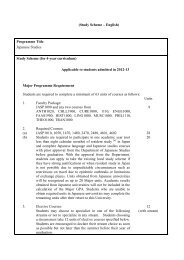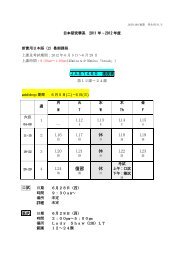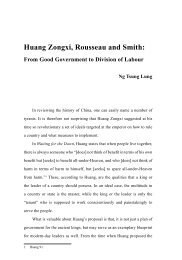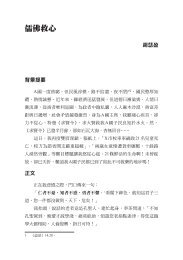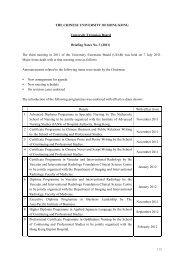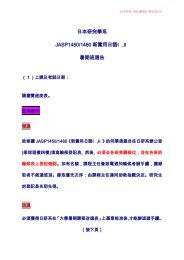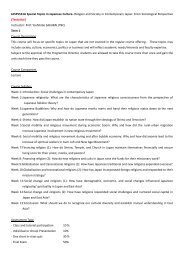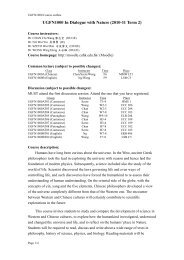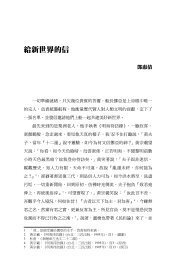ä¸è¼å ¨æ¸ - The Chinese University of Hong Kong
ä¸è¼å ¨æ¸ - The Chinese University of Hong Kong
ä¸è¼å ¨æ¸ - The Chinese University of Hong Kong
Create successful ePaper yourself
Turn your PDF publications into a flip-book with our unique Google optimized e-Paper software.
Susan Gano-Phillips, Affective Learning in General Education<br />
<br />
they ask questions to the instructor, and when they complete assignments<br />
or homework.<br />
At the third level, “valuing,” affective learning occurs when a learner<br />
shows definitive involvement in or a commitment to a particular object,<br />
phenomenon, or behavior. Valuing is based on the internalization <strong>of</strong> a set<br />
<strong>of</strong> specific values or attitudes, where clues to these values are expressed in<br />
the learner’s stable overt behavior. Students demonstrate “valuing” when<br />
they consistently prioritize time effectively to meet academic obligations<br />
and when they, for example, practice the safe handling <strong>of</strong> equipment and<br />
materials in a laboratory science course throughout a semester (Gronlund &<br />
Brookhart, 2009).<br />
<strong>The</strong> fourth level <strong>of</strong> the taxonomy, “organization,” reflects the integration<br />
<strong>of</strong> a new value into one’s general set <strong>of</strong> values. Gronlund (1991) recognized<br />
the increasing complexity <strong>of</strong> this form <strong>of</strong> learning when he noted, “As<br />
affective outcomes move from simple to complex, they become increasingly<br />
internalized and integrated with other behaviors . . . to form complex value<br />
systems and behavior patterns” (p. 52). In “organizing” values, learners<br />
must resolve conflicts between various values and begin to rank various<br />
values according to their priorities. Examples <strong>of</strong> learning outcomes at the<br />
“organization” level include the acceptance <strong>of</strong> pr<strong>of</strong>essional ethical standards<br />
and the formulation <strong>of</strong> a life plan that balances work and personal values.<br />
<strong>The</strong> fifth and highest level in the affective taxonomy is referred to<br />
as “characterization by a value or value set” and occurs when a learner’s<br />
behavior is “pervasive, consistent, and predictable,” as if it has been adopted<br />
as a lifestyle (Gronlund, 1991, p. 34). One example <strong>of</strong> a learning outcome<br />
at this level would be a student who shows self-reliance when working



